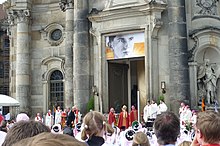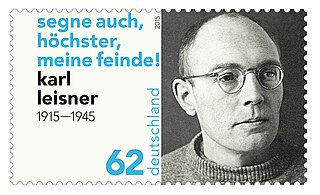
Karl Leisner was a Roman Catholic priest interned in the Dachau concentration camp. He died of tuberculosis shortly after being liberated by the Allied forces. He has been declared a martyr and was beatified by Pope John Paul II on 23 June 1996.
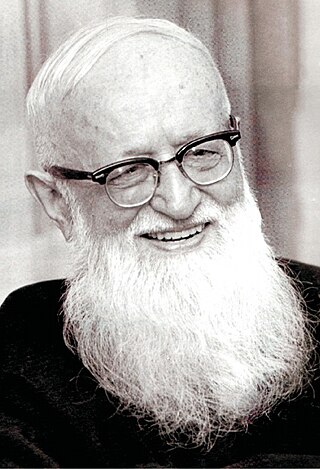
Peter Joseph Kentenich, SAC was a German Pallottine priest and founder of the Schoenstatt Apostolic Movement. Kentenich was a theologian, educator, and founder of a Catholic movement, whose teachings underwent a series of challenges from political and ecclesiastical powers. The process for his beatification was opened in 1975.
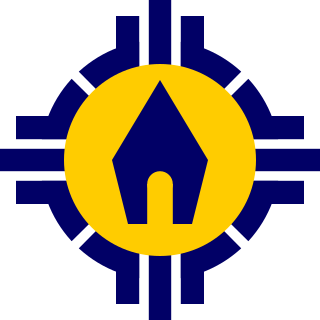
The Apostolic Movement of Schoenstatt is a Catholic Marian movement founded in Germany in 1914 by Fr Joseph Kentenich, who saw the movement as a means of spiritual renewal for the Catholic Church. The movement is named after the small locality of Schönstatt which is part of the town of Vallendar near Koblenz, in Germany.
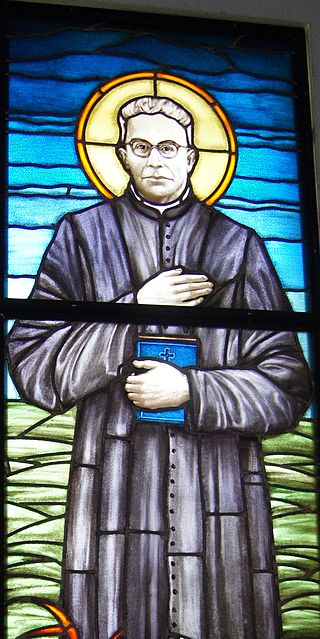
Władysław Findysz was a Polish priest of the Roman Catholic Church. He was imprisoned under the Communist regime in 1963 until not too long before his death on the charges of sending religious newsletters to his parishioners. He was beatified under Pope Benedict XVI on 19 June 2005.

Stefan Wincenty Frelichowski was a Polish Roman Catholic priest. He was part of the scouts and was affiliated with several other groups during the course of his ecclesial education though maintained strong links to these groups after his ordination to the priesthood. He was arrested not long after World War II began and the Gestapo moved him to several concentration camps before sending him to Dachau where he died from disease.

The 108 Martyrs of World War II, known also as the 108 Blessed Polish Martyrs, were Catholics from Poland killed during World War II by Nazi Germany.
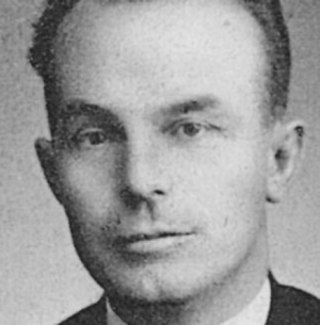
Jakob Gapp was an Austrian Roman Catholic priest and a professed member from the Marianists. Gapp first served as a soldier on the Italian front during World War I at a point in his life where his religious convictions were not of high importance, though his return home from a prisoner of war camp saw him develop socialist views that soon bought him into contact with the Marianists whom he later joined. After studies and ordination he was assigned in Austria as a teacher, where he became noted for his vehement opposition to the Nazi regime; he deemed Nazism as being some warped political tool to create division which was also incompatible with the faith.

The Priest Barracks of Dachau Concentration incarcerated clergy who had opposed the Nazi regime of Adolf Hitler. From December 1940, Berlin ordered the transfer of clerical prisoners held at other camps, and Dachau became the centre for imprisonment of clergymen. Of a total of 2,720 clerics recorded as imprisoned at Dachau some 2,579 were Roman Catholics. Among the other denominations, there were 109 Protestants, 22 Orthodox, 8 Old Catholics and Mariavites and 2 Muslims. Members of the Catholic Society of Jesus (Jesuits) were the largest group among the incarcerated clergy at Dachau.
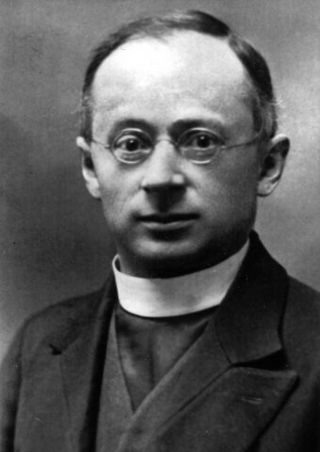
Otto Neururer was an Austrian Roman Catholic priest and was the first priest to die in a Nazi concentration camp. Neururer did his studies for the priesthood in Brixen before he served as a teacher and pastor in several cities before settling in 1932 in Götzens near Innsbruck. He was arrested in 1938 for attempting to persuade a girl not to be wed to a man of questionable morals and was sent to Dachau before being transferred to Buchenwald where he died after being hanged upside down, nailed to a tree, practically crucified. As he was "crucified" he did not scream, but instead prayed silently. He was left there for 36 hours and then killed by Nazi guard Martin Sommer. Otto Neururer was later beatified.

Gerhard Hirschfelder was a German Roman Catholic priest. He was a vocal critic of Nazism and used his sermons to condemn Nazi propaganda and other aspects of Nazism which drew suspicion on him from the authorities who monitored him and even interrogated him on occasion. He was a staunch supporter of the role of adolescents in the life of the Church and made them a focus in his pastoral activities. In his imprisonment he became a member of the Schoenstatt Movement.

Giuseppe Girotti was an Italian Roman Catholic priest and a professed member from the Order of Preachers. He served as a biblical scholar on both the Book of Wisdom and the Book of Isaiah and served as a professor of theological studies prior to World War II where he worked to aid Jewish people and to shield them from the Nazi Holocaust. But the priest was arrested in 1944 and moved from prison to prison before being imprisoned at the Dachau concentration camp where he befriended Josef Beran and Carlo Manziana.
The Roman Catholic Church suffered persecution in Nazi Germany. The Nazis claimed jurisdiction over all collective and social activity. Clergy were watched closely, and frequently denounced, arrested and sent to Nazi concentration camps. Welfare institutions were interfered with or transferred to state control. Catholic schools, press, trade unions, political parties and youth leagues were eradicated. Anti-Catholic propaganda and "morality" trials were staged. Monasteries and convents were targeted for expropriation. Prominent Catholic lay leaders were murdered, and thousands of Catholic activists were arrested.

Michał Kozal was a Polish Roman Catholic bishop. Kozal was noted for his intelligence and dedication to studies and studied to become a priest during World War I, which disrupted his studies but did not prevent his ordination in 1918; he gained fame for his abilities and rose to several positions that superiors endowed upon him all culminating in being named a Monsignor in 1932 and then appointed to the episcopate in 1939 just before World War II started. But his pastoral mission as a bishop did not last long since the Nazi forces arrested and tortured him and sent him to Dachau where he died after being injected with a lethal substance.

Odoardo Focherini was an Italian Roman Catholic journalist. He issued false documents to Jews during World War II in order for them to escape the Nazi regime but was arrested and sent to a concentration camp where he later died. Yad Vashem later recognized him as a Righteous Among the Nations in 1969 for his efforts.

Engelmar Unzeitig, born Hubert Unzeitig, was a German Roman Catholic priest who died in the Dachau Concentration Camp during World War II on the charge of being a priest. He was a professed member of the Missionary Order of Mariannhill and assumed the religious name Engelmar when he was admitted into the order. He became known as the "Angel of Dachau".

Marcel Callo was a French Roman Catholic from Rennes who served in Catholic organizations – in particular the Young Christian Workers (Jocists) – devoted to charitable works to the poor and to communities in general. Callo served as an apprentice at a print store from the age of thirteen before joining Catholic associations in France. He was conscripted to serve during World War II and the Gestapo arrested him in 1944 for his Christian activities. He died in the camps after being forced to do long hours of labour.

Carl Lampert was an Austrian Roman Catholic priest who served as the pro-vicar for the Diocese of Feldkirch in addition to being an outspoken critic of Nazism during World War II. This led to constant surveillance against him and his eventual arrests on several occasions. This culminated with his final arrest in 1943 and eventual execution by guillotine in 1944 alongside another Christian prisoner.

The Martyrs of Albania were a collective group of 38 individuals killed during the Communist regime in Albania from 1945 until 1974. All were born at various times between 1874 and 1935; the group included Albanians and Italians as well as one German. Each of these individuals, apart from four, were part of the religious life as either priests or religious and served as either missionaries or educators with a great deal spending their educational formation in Italian and Austrian cities.

Richard Henkes was a German Roman Catholic priest of the Society of the Catholic Apostolate (Pallottines). Henkes served as a teacher but was best known for his preaching abilities in the pulpit where he made strong-worded condemnations of Nazism and the actions the Nazis were said to have made. Henkes offered indirect assistance to the German Resistance during World War II and was one of the more vocal German priests to condemn Nazism. This often worried his superiors who believed that Henkes placed his schools at great risk. He was critical of the regime's murder of the disabled and other atrocities which forced the S.S. to arrest him. His first arrest in 1938 saw him released but his second arrest in 1943 saw him sent to the Dachau concentration camp. It was during that time that he befriended Josef Beran who taught him the Czech language.

